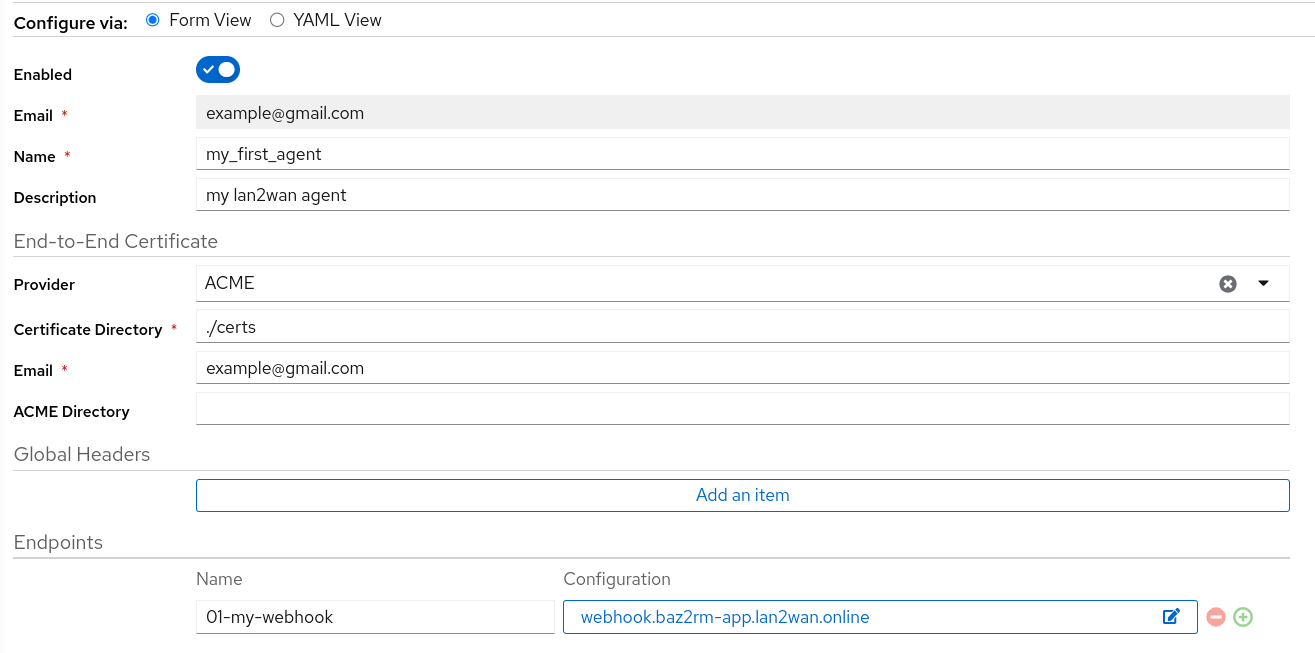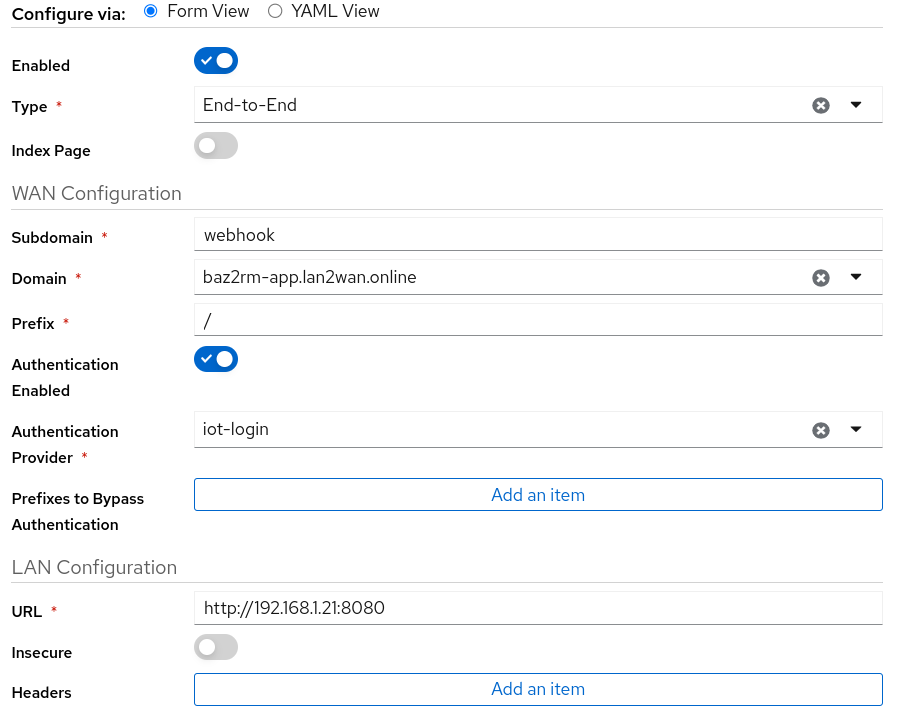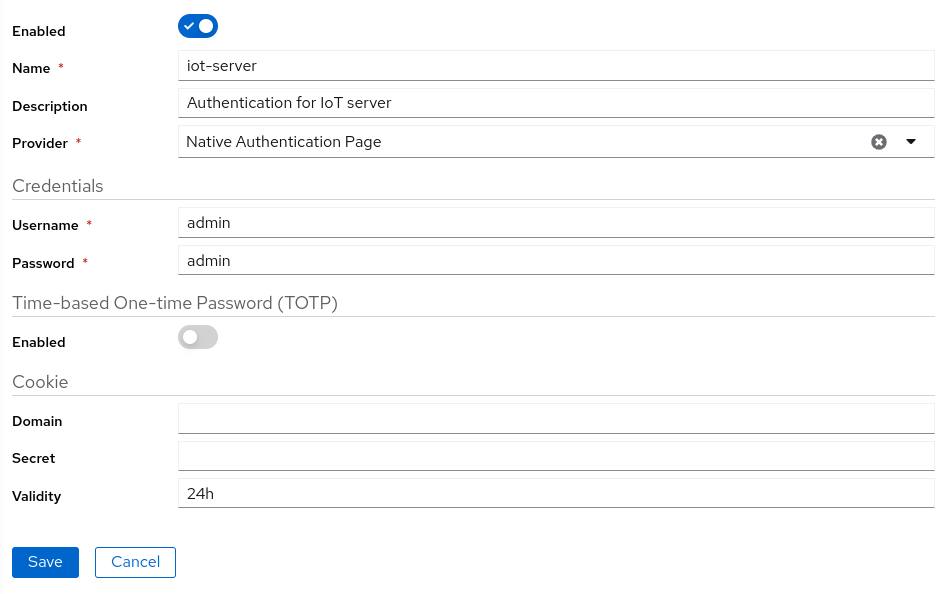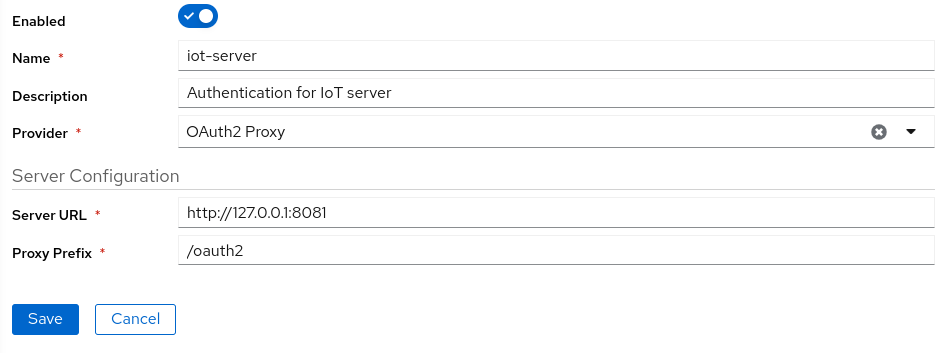In this page you can update your agent and endpoint configurations.
This is the multi-page printable view of this section. Click here to print.
Agent
- 1: Agents
- 2: Agent Token
- 3: Authentication Providers
1 - Agents
Navigate to: Agent >> Agents
You can add your endpoints and map with a public domain you can also configure headers, authentication for your endpoints.
Add an agent
To add new agent details, go to Agent >> Agents and click on Add

- Enter a name for the agent
- If you plan to use different end-to-end encryption certificate, select a provider. default provider letsencrypt.
- under the endpoint click on
Add an item - on the
Namefield add a name for your reference - click on
UpdateunderConfigurationand follow endpoint configuration
Endpoint Configuration

- Select a endpoint type. default
End-to-End - Add a subdomain to access this endpoint
- if you plan to add additional layer of security to your service, select a authentication provider
- On the LAN configuration enter your endpoint/service url
- Click on
Updateand click onSave
Now under the agents your newly created agent will be listed.
Custom Domain
If you use your own custom domain. you have to update WAN IP and domain name into your domain providers AAA record.To get WAN IP, go to agent details page and copy the
Domain WAN IP
localhost can not be used
In endpoint on LAN url, you can not uselocalhost, You have to use 127.0.0.1 in the place of localhost Example:
http://localhost:8080 should be as http://127.0.0.1:8080
2 - Agent Token
Navigate to: Agent >> Agent Token
To connect your agent to the lan2wan server, you need a agent name, token and email.
Also you can regenerate your agent token on this page.
3 - Authentication Providers
Navigate to: Agent >> Authentication Providers
Authentication providers gives additional security to your endpoint. On a successful authentication allows access to your local endpoint. Different type of authentication supports are available.
- Basic Authentication
- Native Authentication Page
- Token Authentication
- OAuth2 Proxy
To add a authentication provider, Navigate to authentication provide page and click on Add
Basic Authentication
When you access your endpoint with a basic authentication, you will get a authentication popup on your browser.

Native Authentication Page
When you access your endpoint with a Native authentication page, you will be redirected to a login page. on successful authentication you will be landed into your endpoint.

Token Authentication
You have to include the generated token on your url as a header or query parameter.

OAuth2 Proxy
When you access your endpoint with OAuth2 proxy, you will be redirected to OAuth2 proxy login page. As a pre request you should have configured oauth2 proxy
